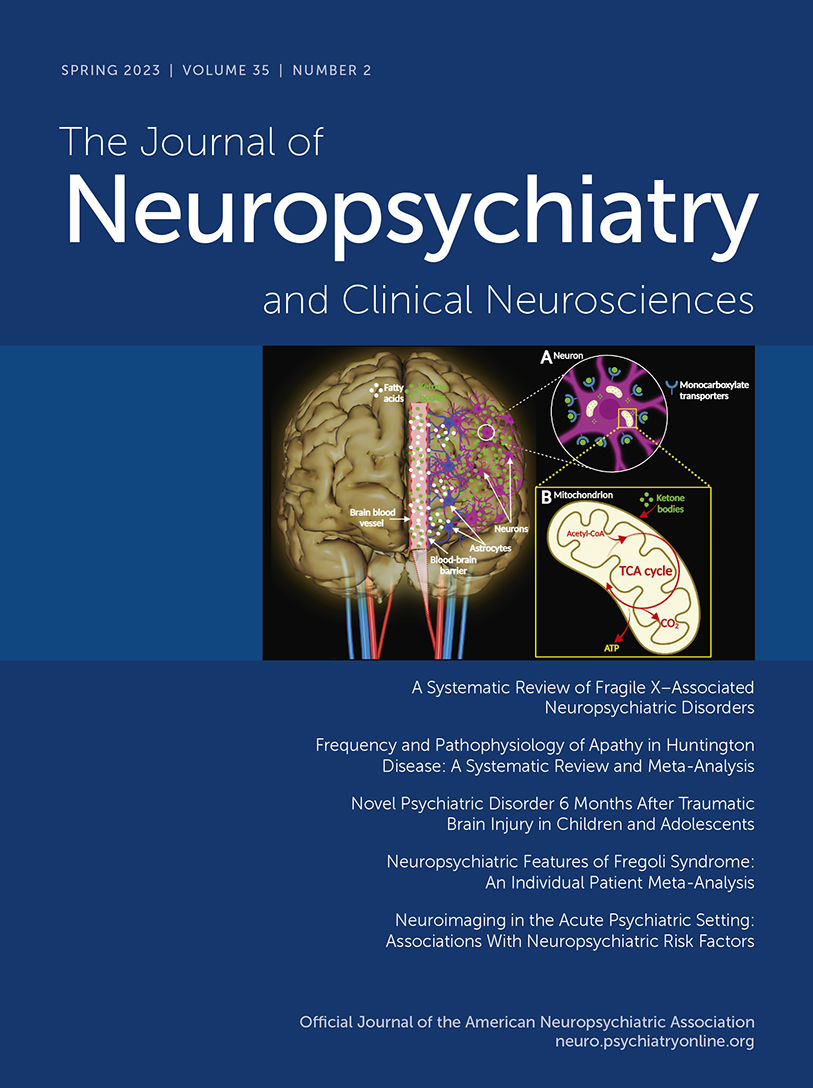Neuroimaging in the Acute Psychiatric Setting: Associations With Neuropsychiatric Risk Factors
Abstract
Objective:
The appropriateness and clinical utility of neuroimaging in psychiatric populations has been long debated, and the ambiguity of guideline recommendations is well established. Most of the literature is focused on first-episode psychosis. The investigators aimed to review ordering practices and identify risk factors associated with neuroradiological MRI abnormalities and their clinical utility in a general psychiatric population.
Methods:
A retrospective file review was undertaken for 100 consecutive brain MRI scans for adult psychiatric inpatients who received scanning as part of their clinical care in an Australian hospital.
Results:
Brain MRI was abnormal in 79.0% of scans; in these cases, 72.2% of patients required further investigation or follow-up, with 17.7% requiring urgent referral within days to weeks, despite only 3.7% of admitted patients undergoing MRI during the study period. Psychiatrically relevant abnormalities were found in 32.0% of scans. Abnormalities were more likely to be found in the presence of cognitive impairment, older age, and longer duration of psychiatric disorder. Psychiatrically relevant abnormalities had further associations with older age at onset of the psychiatric disorder and a weak association with abnormal neurological examination. Multiple indications for imaging were present in 57.0% of patients; the most common indications were physical, neurological, and cognitive abnormalities.
Conclusions:
Brain MRI is a useful part of psychiatric management in the presence of certain neuropsychiatric risk factors. The present findings suggest that treating teams can judiciously tailor radiological investigations while limiting excessive imaging. Future research in larger cohorts across multiple centers may contribute to shaping more consistent neuroimaging guidelines in psychiatry.



